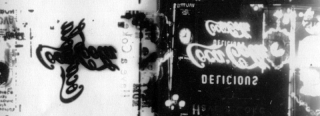Swingeing London 4
Date: 13 April 2007 | Season: Swingeing London
SWINGEING LONDON: 4
Friday 13 April 2007, at 9pm
Filmhuis Den Haag
Introduction by Mark Webber
POEM FOR HOPPY
Boyle Family, UK, 1967, 16mm, colour, sound, 4 min (shown on video)
An improvised performance, by Soft Machine and the Sensual Laboratory, in protest against John Hopkins’ conviction for marijuana possession.
“Mark Boyle and Joan Hills lived in and around Ladbroke Grove in the middle 1960s, organising events and making sculptures that attempted to present reality as it is. The events included various projection pieces presenting physical and chemical change: boiling water, burning slides and bodily fluids that led to them being asked by Hoppy to do a presentation at the first night of the UFO club, where their liquid light of exploding colours became the main visual accompaniment to the bands that performed there. Pink Floyd, Soft Machine, Jimi Hendrix, the underground scene and psychedelic lightshows exploded out of UFO, across London and around the world.” (Portobello Film Festival)
MAJA REPLICATE
Fred Drummond, UK, 1969, 16mm, colour, silent, 15 min (double screen projection)
Maja Replicate is a freewheeling collage of disparate materials assembled through visual and technical improvisation in the LFMC workshop.
“A multi-coloured reprint using diary material, found footage of a male and female scientist (much decayed), Claudette Colbert from Siren of Atlantis, a glamorous model and a film of the Phun City festival. The structure, a conglomeration of fades, stills, repeats, loops and slipping footage was the result of a process of physical rapport with the film co-op printing machine. Basically an over-ripe colour concoction. I enjoyed making it!” (Fred Drummond)
CHOKE
David Crosswaite, UK, 1971, 16mm, b/w & colour, sound, 5 min (double screen projection)
Driven by a live recording of “Crossroads” by Cream, Choke is a positive/negative, Pop Art explosion across two screens. The title takes a dig at Coke, whose huge neon sign at Piccadilly Circus provides most of the raw material, which is dynamically animated, superimposed, mirrored and inverted.
SOUL IN A WHITE ROOM
Simon Hartog, UK, 1968, 16mm, colour, sound, 3 min
LFMC founder member Simon Hartog was one of the most politically aware filmmakers of the period. This early short film is an amusing piece of social commentary on mixed race relationships, which were hardly commonplace in the UK at that time, and has a soundtrack by The Troggs. The male character played by Omar Dop-Blondin, a Sengelese student fresh from the Paris 68 protests, and an associate of the London Black Panthers.
NAISSANT
Stephen Dwoskin, UK, 1964-67, 16mm, b/w, sound, 14 min
Dwoskin’s early films were heavily influenced by Warhol, in both the visual content and extended duration. They typically consisted of long takes from a fixed or hand-held camera, with an attractive young woman as the only protagonist. Composer Gavin Bryars provided the soundtrack to Naissant and several others.
“Objective location: a bed; subjective location: in thoughts. Being with thoughts and the child to be born. Camera from three sides of the bed with three lenses working from bed level and standing level. Filmed in New York in 1964, completed in London 1967. Naissant presents being alone with one’s thoughts. Time and her inner thoughts are found out only by spending time with her in the film.” (Stephen Dwoskin)
VIDEOSPACE REEL
John Hopkins / TVX, UK, 1970, 16mm, colour, sound, 15 min (shown on video)
This recently rediscovered reel of early video image processing by John Hopkins and the TVX collective begins with a music “visualisation” made for the BBC to accompany the track “Scotland” by Area Code 615. The remaining footage is an excerpt from the Videospace happening which took place inside a BBC TV studio: an un-broadcast optical dub session which incorporated music, tape, film and feedback loops, lightshows, dancing, inflatables and live video mixing.
HORIZON
Lutz Becker, UK, 1968, 16mm, colour, sound, 5 min
Beginning in 1966, Lutz Becker and BBC engineer Ben Palmer collaborated on a sequence of works in their quest to create “electronic moving pictures”. The calligraphic forms seen in Horizon were generated by feedback loops between cameras and monitors, with colour added later on a conventional optical printer. The music was composed and performed by cellist Joy Hall.
PAPERCITY
John Bennett, UK, 1969, 16mm, colour, sound, 5 min
Papercity builds an impressionistic portrait of London through still photographs and timelapse footage. Views of the city rarely feature in experimental films of this period, but this semi-commercial production, funded by the British Film Institute, is an evocative study of everyday sights and activities.
Also Screening: Monday 16 April 2007, at 8:30pm
